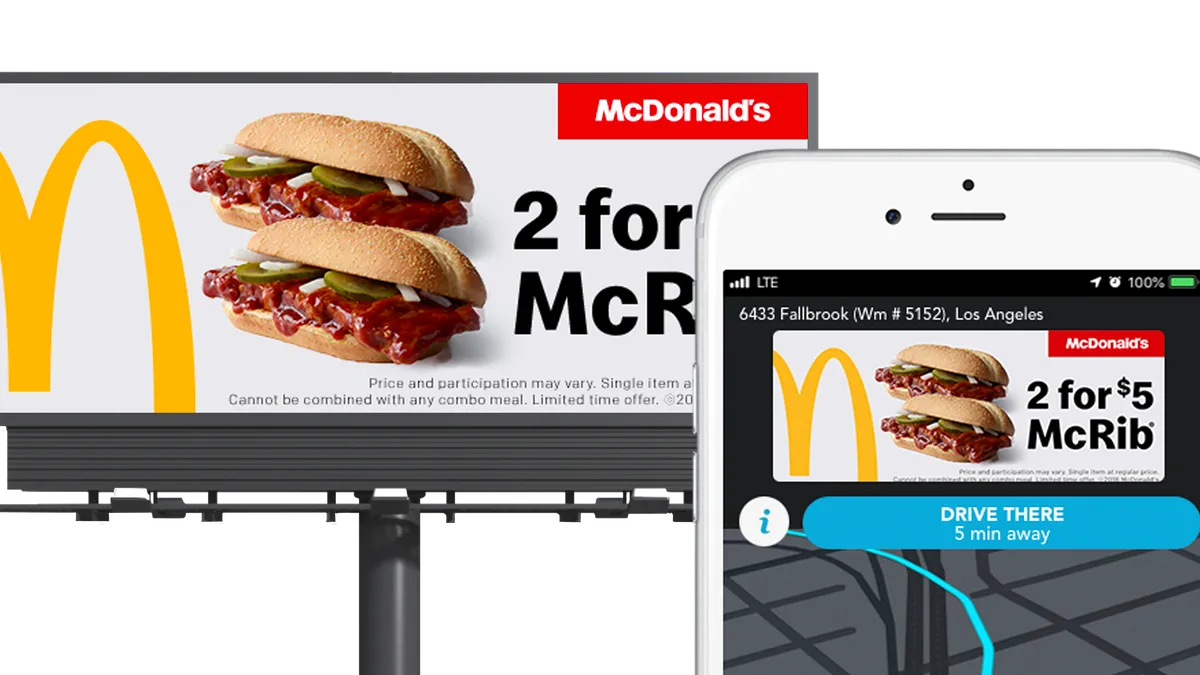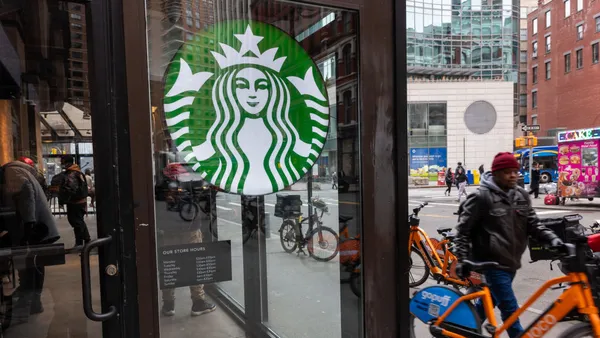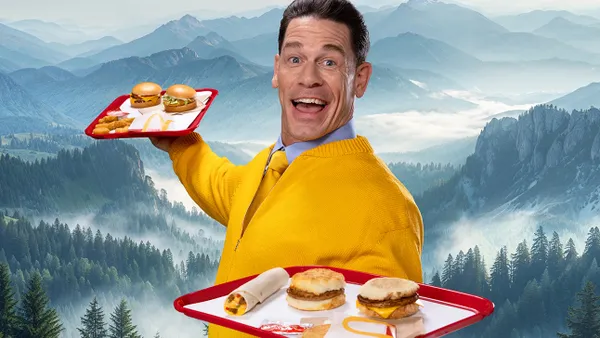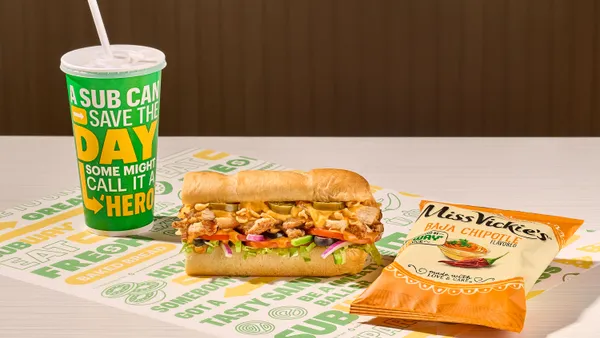Dive Brief:
- McDonald's earned 6.4 million mobile impressions by tying together out-of-home (OOH) billboards and in-app advertising on Waze, according to case study details shared with Mobile Marketer. The fast-food chain is the world's largest spender on OOH media and worked with its outdoor agency Outdoor Media Group on the push.
- The campaign leveraged more than 300 billboards equipped with geofencing technology in the Southern California market to serve Waze users in close radius an in-app ad format called Zero Speed Takeover. The full-screen ads were served anytime a user's car came to a full stop for several seconds.
- Messages shown in the ads reflected those on the billboards, touting McDonald's menu promotions, like the limited return of the McRib, and carrying a call-to-action to "Drive There," wherein Waze navigation guided consumers to nearby restaurants. The campaign resulted in more than 8,400 navigations — meaning a user decided to activate the call-to-action — and reached 1.9 million unique consumers across an eight-week run in October and November last year.
Dive Insight:
McDonald's work with Waze shows how the restaurant marketer is continuing to see measurable results by focusing on mobile-first marketing. A stronger approach to the channel has previously manifested in the chain's growing mobile ordering and delivery business with partners like Uber Eats, but the latest case study illustrates how the pivot is translating to advertising as well. McDonald's has been ramping up a push to innovate, including by overhauling in-store technology and its own app offering, amid sales declines in recent years and a struggle to connect with younger consumers who favor fresher, healthier eating alternatives.
Competitors in the fast-food category, like chief rival Burger King, have also recently tapped into location-based tactics in order to encourage app downloads and in-store visits. But McDonald's brought a digital OOH component into the mix to better engage on-the-go consumers. The brand wasn't looking to target a specific audience or day part — say, commuters — according to Waze's OOH Business Lead Todd Palatnek, but rather take a "toe dip" into the digital OOH waters.
"We're really creating new benchmarks right now," Palatnek said in a phone interview. "These are campaigns that have never really been done before from the Waze point of view — we're learning as we go."
"We were able to provide a lot of insights for [McDonald's] that they may not have had in the past from an out-of-home standpoint, such as performance by creative," he added.
Those performance metrics were not only tied to particular meal promotions but also provided a look at the behaviors of certain demographics. Waze offers a Spanish-language version of its app, for example, which gave McDonald's more specific data on how consumers who speak the language responded to the creative, per Palatnek.
McDonald's will continue to work with Waze in Southern California through 2019 following the fall pilot and is expanding the partnership to five additional markets: Las Vegas, Arizona, Tampa, Orlando and Houston. The news shows how Waze is looking to build out its mobile advertising business — it also recently partnered with WPP to develop smarter in-car ads — and tap into a burgeoning market for services that bridge digital and outdoor media.
Waze first established its OOH unit seven months ago and specifically brought Palatnek on to lead the practice, with the McDonald's campaign serving as the first big brand experiment. Ad formats like Zero Speed Takeover were available to brands advertising on the platform before, but are evolving to better tie together messages across channels.
"What's new is the fact that we were radius-targeting around not just store location, but also encompassing the billboards within that as well," Palatnek said.
Waze is looking to continue to iterate on its digital OOH business as the tactic continues to trend upward. The total OOH market climbed 4.6% last year, according to Magna data, marking it as the only traditional media channel to experience growth, which could be attributed to an uptick in digital investments and integrations. Despite the historically static nature of OOH formats like billboards, the channel is accommodating more personalized campaigns as location-based technology gets smarter.
"As we grow with [Outdoor Media Group] and McDonald's and other agencies, we'll optimize and make tweaks where needed," Palatnek said. "Every campaign is different based on who the brand is and what the goals are of the campaign — the approach is always a little different."












